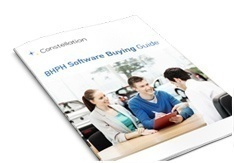As I analyze data and visit Buy Here – Pay Here dealerships, I am constantly amazed by the amount of overage inventory some dealerships insist on maintaining on their lots. They seem to be unaware or unconcerned about the costs that are associated with this overage inventory and how it can be dragging the performance of their dealership down.
Let’s look at a few of the ways stale inventory can affect the performance of your dealership:
- Excessive overage inventory can reduce sales. Sales are generated by lot traffic. If prospective customers keep seeing the same vehicles every time they drive by your lot, they make the assumption that nothing is being sold. They further assume that if no one else is buying vehicles from your dealership, then there must be a good reason so they certainly don’t want to buy from you either. Thus, you have lost a sale without the customer even driving on your lot.
- Excessive overage inventory demand more reconditioning. The longer a vehicle sits on your lot, the more likely it becomes that you are going to spend extra money reconditioning that vehicle. We have all heard the term ‘lot rot’. Things will go wrong with vehicles that are just sitting and not being operated regularly. Seals and gaskets will dry up, metal parts will corrode and the vehicle will develop issues it did not have when you first put it out for sale. Now not only are you able to sell the vehicle and make the profit you anticipated but you are incurring extra costs on a vehicle you may have to mark down to even get to sell…
- Excessive overage inventory can lower morale. Your employees also get tired of looking at the same vehicles every day. As lot traffic gets slower and slower, they have more and more time to look at these vehicles and begin to pick them apart and focus on every issue those vehicles are perceived to have. They grow so sick of them that when someone does come on the lot, they steer them away from those units, perpetuating the problem.
I point these issues out to dealers and I generally get the same response. It usually goes something like this, “Well, I paid a good price for those cars and spent some money on reconditioning them. The markets have gone down a little and, if I took them to the auction, I’d lose money. My only choice is to try to retail out of them, even if I have to sell them for what I have in them, so I don’t lose any money.”
What they fail to take into account in their calculation is that every spot on your lot is worth a certain dollar figure and that every day that spot is not producing revenue, it is costing them money. The calculation to figure out what every spot on your lot is worth goes like this:
- Take the total expenses for your dealership (not including cost of goods) and divide by the number of display spaces you have available. This will give you the total amount of your operating expenses for the year designated to each space.
- Take that number and divide it by the number of days you are open during the year. That figure represents what every spot on your lot is worth.
As an example, let’s assume your operating expenses for the year are $180,000. If you have 20 spaces where you display your inventory, then the answer to the first calculation is $9000. Most dealerships are open about 300 days a year so let’s use that number in our example. That would mean that every spot on your lot is worth $30 a day.
You probably see where I am going with this. If you have a car that has been in inventory 200 days, that means that leaving it sit on your lot has cost $6000. If you had taken it to the auction after it had been on your lot only 60 days, it would have cost $1800 – a difference of $4200. Unless you would have lost $4200 at the auction, you would have been better off financially to have sold it at 60 days and replaced it with a fresh piece of inventory.
You also would have fresher inventory to attract prospective customers onto your lot, fresh inventory for your employees to get excited about and fresh inventory you can recondition once and either retail or wholesale before you begin to have to start the reconditioning process all over again. Get your dealership on a strict turn policy and stick to it and you will be happy you did. Don’t let overage inventory eat up your profit.
First published in BHPH eMagazine



